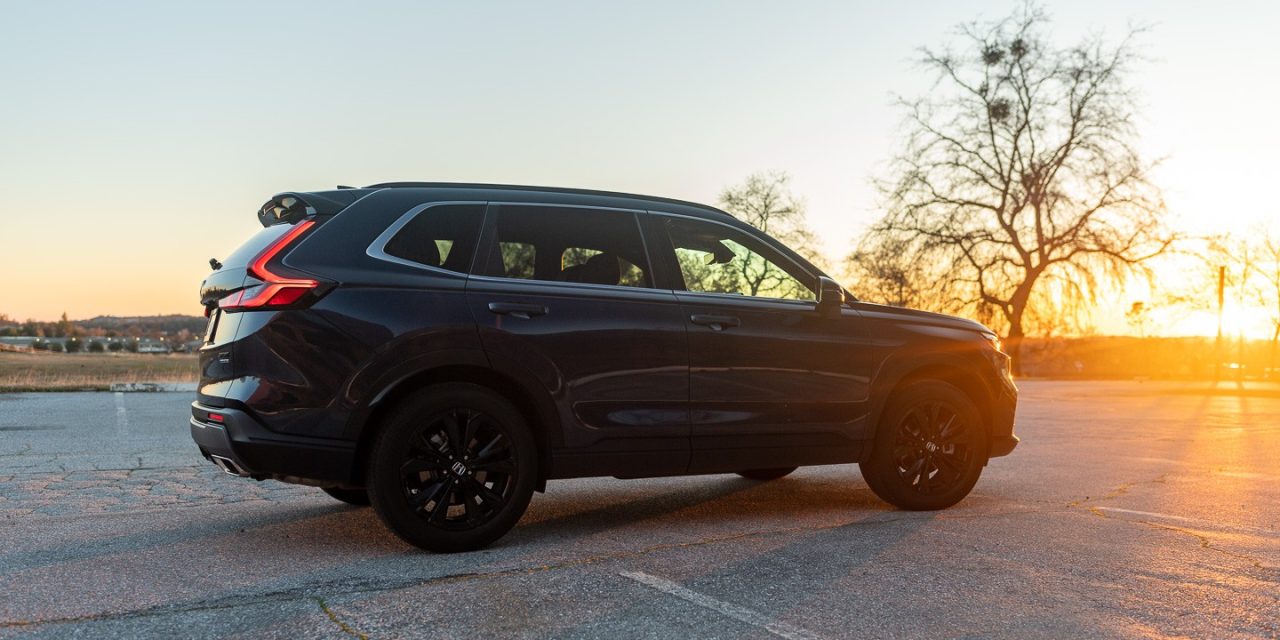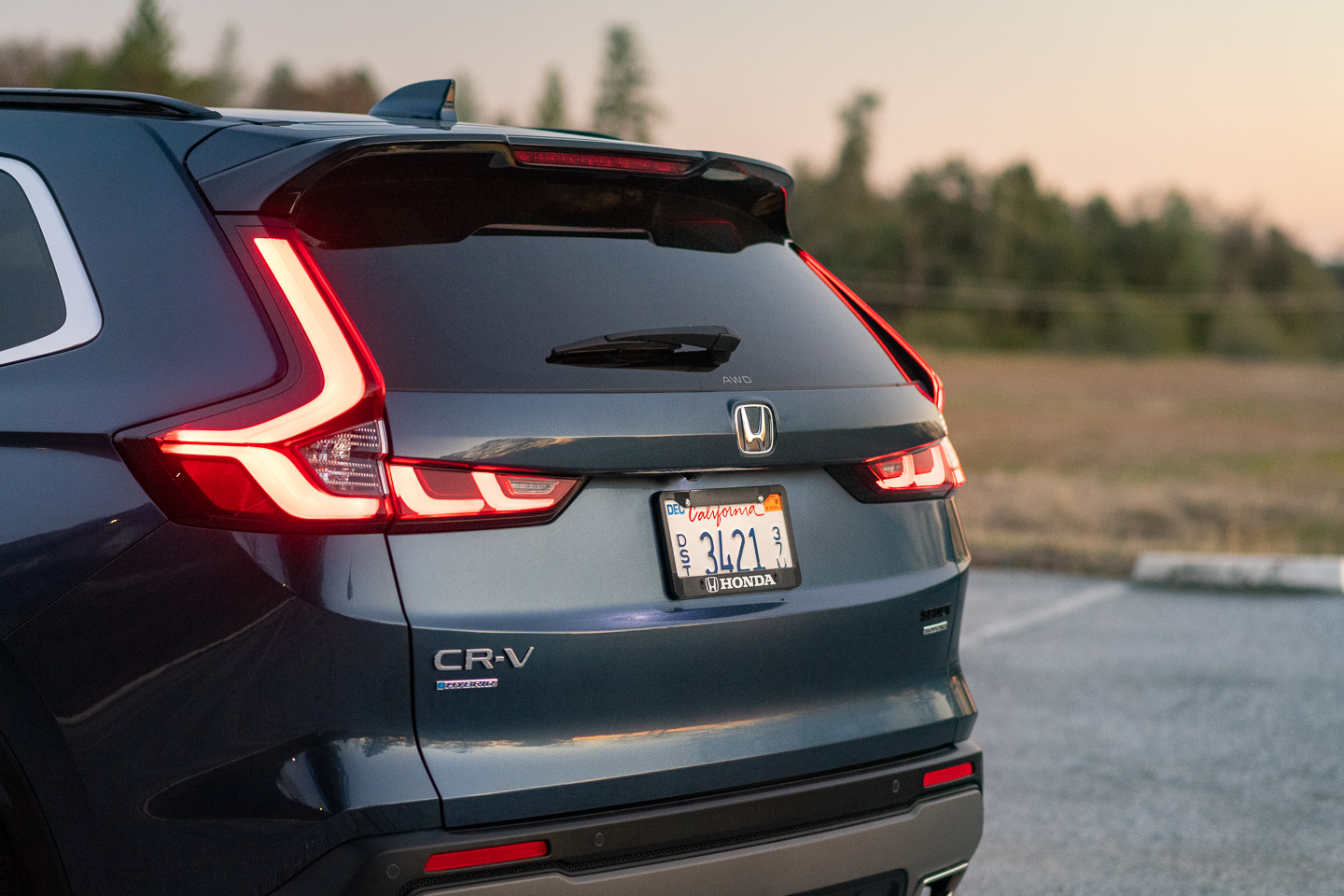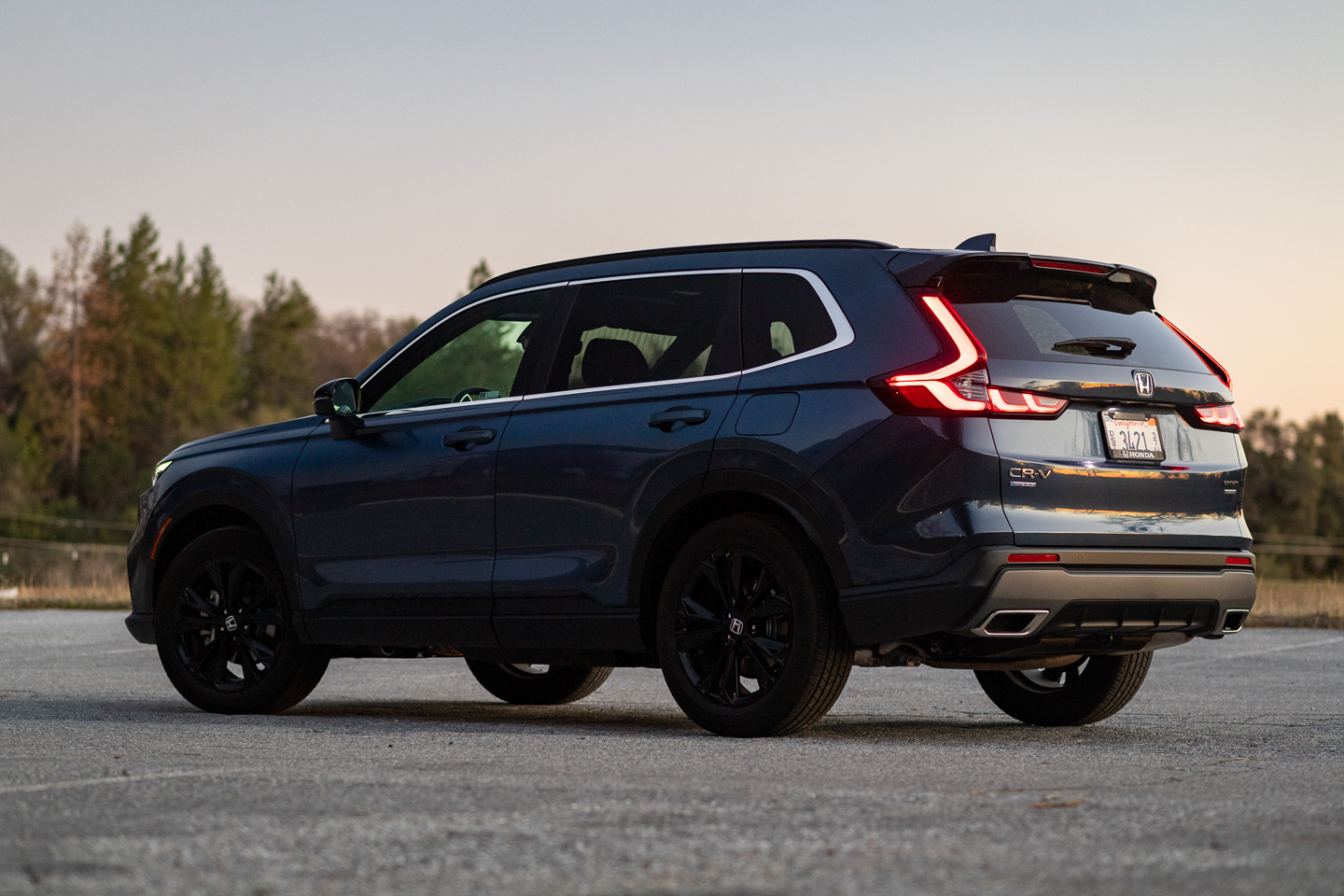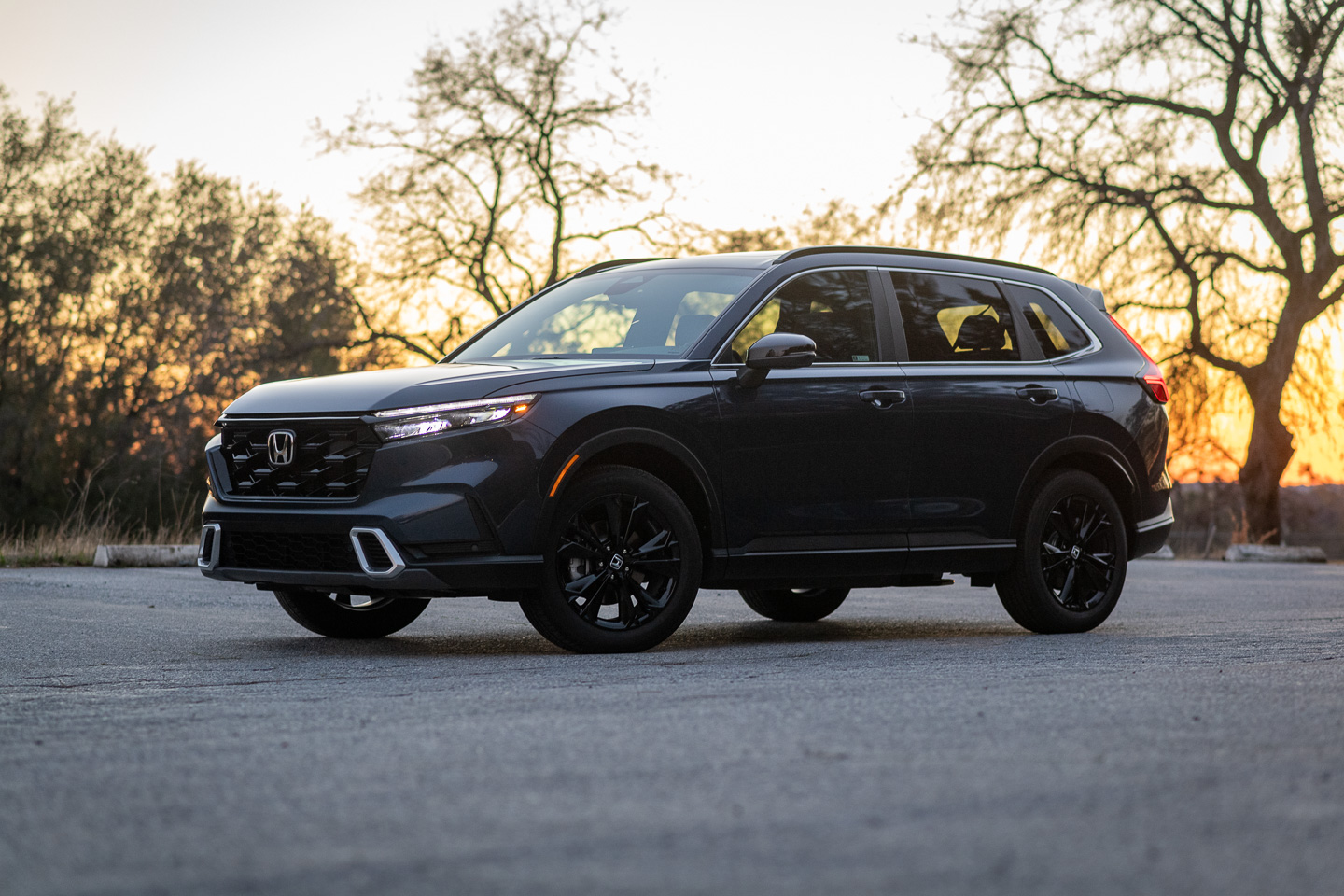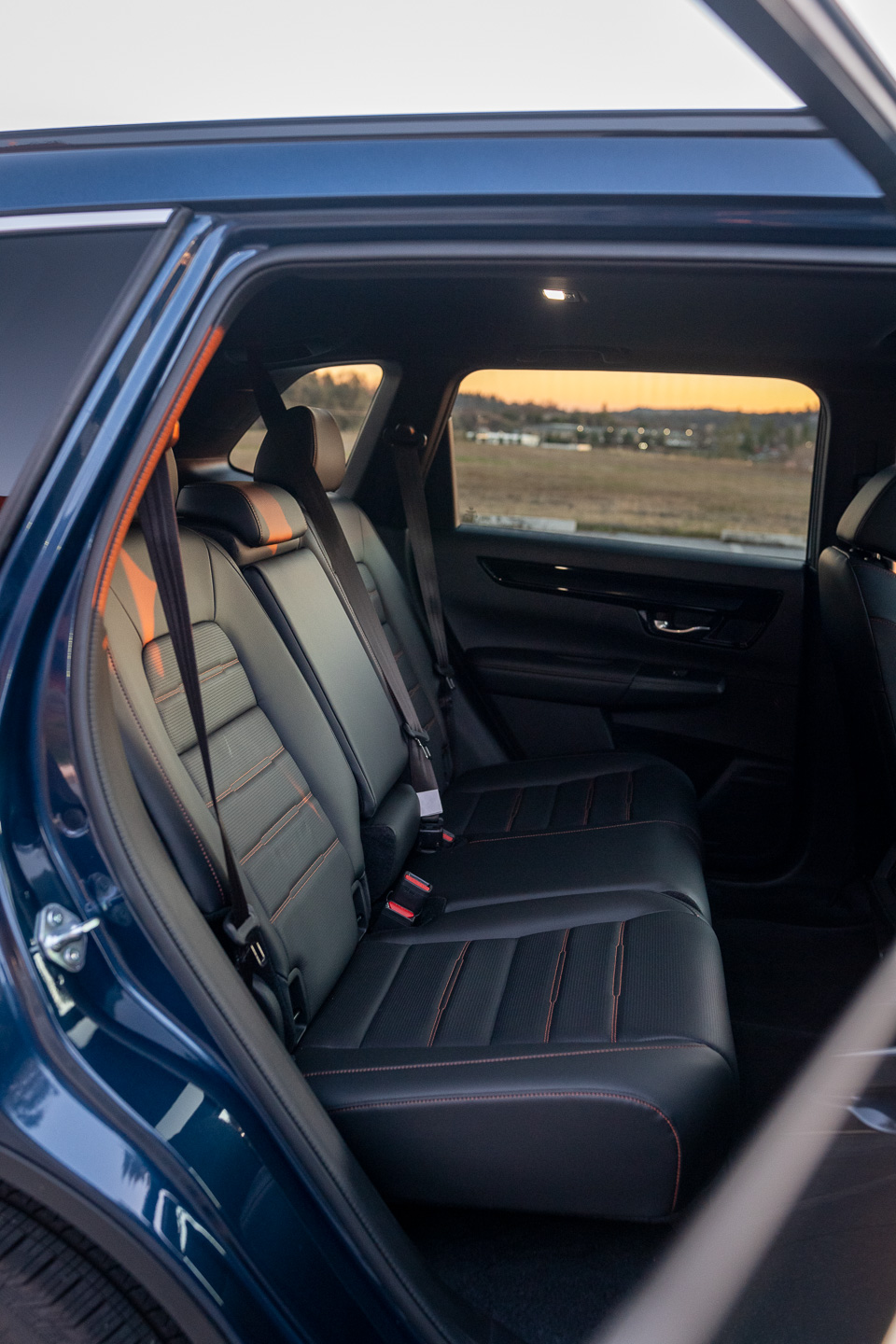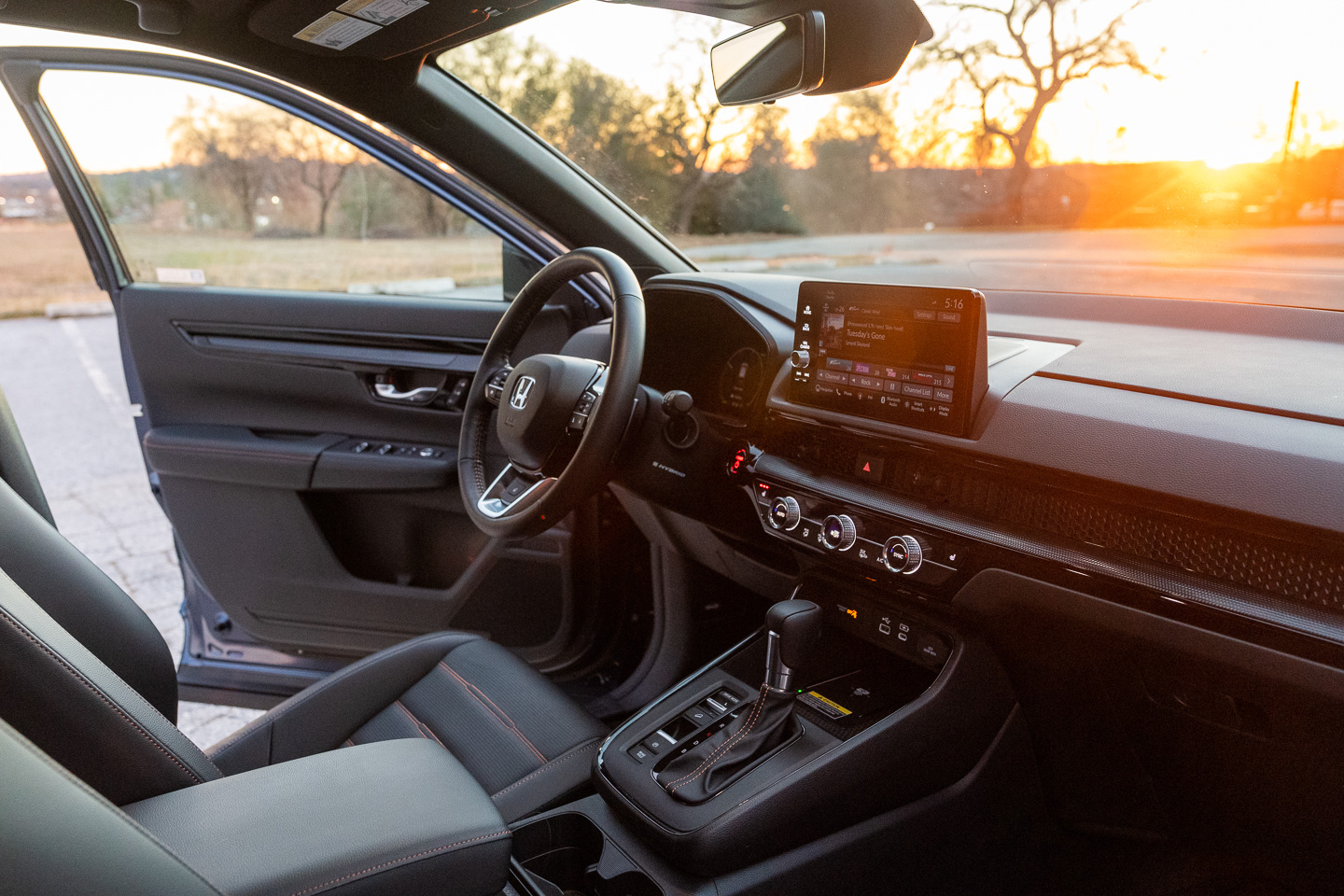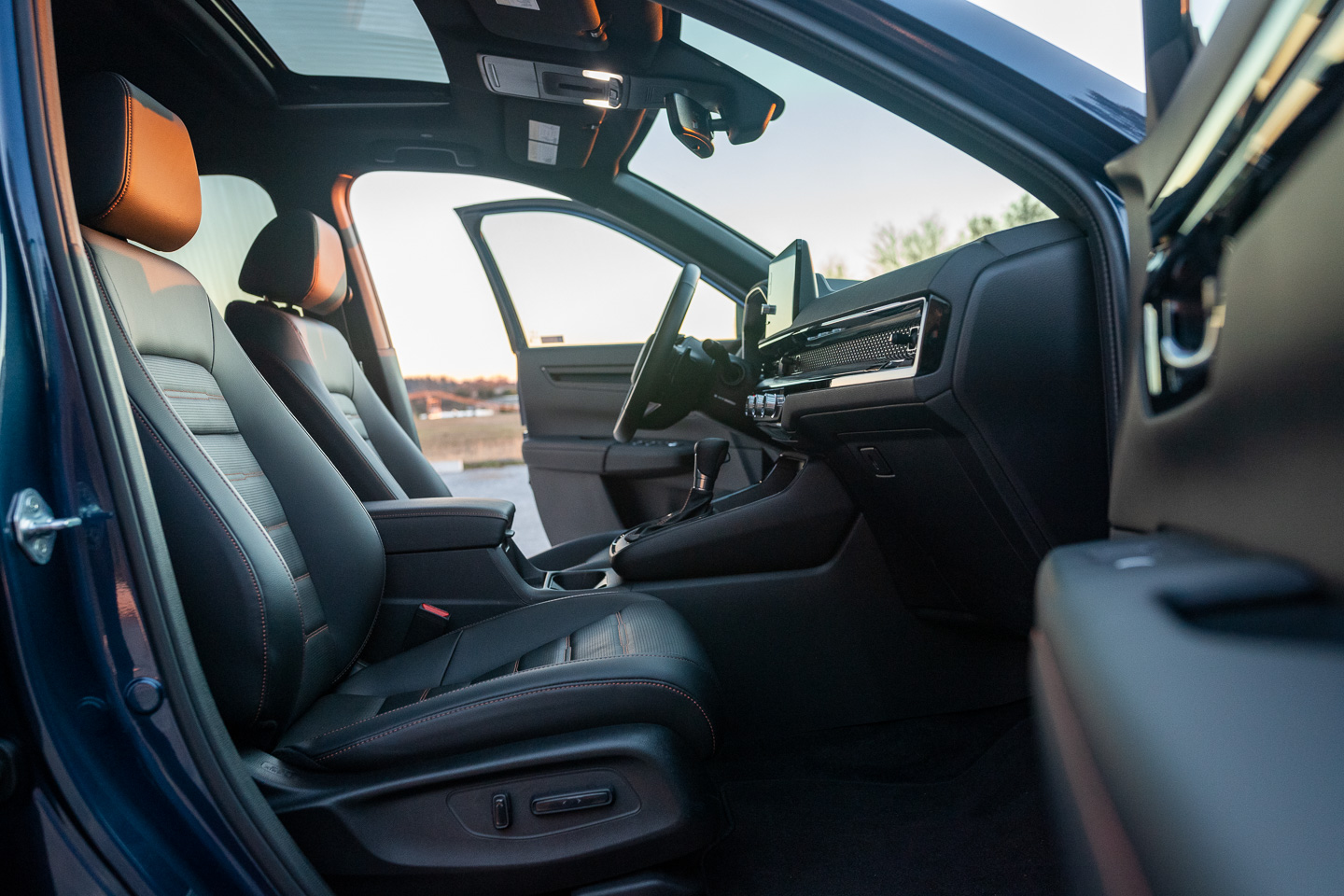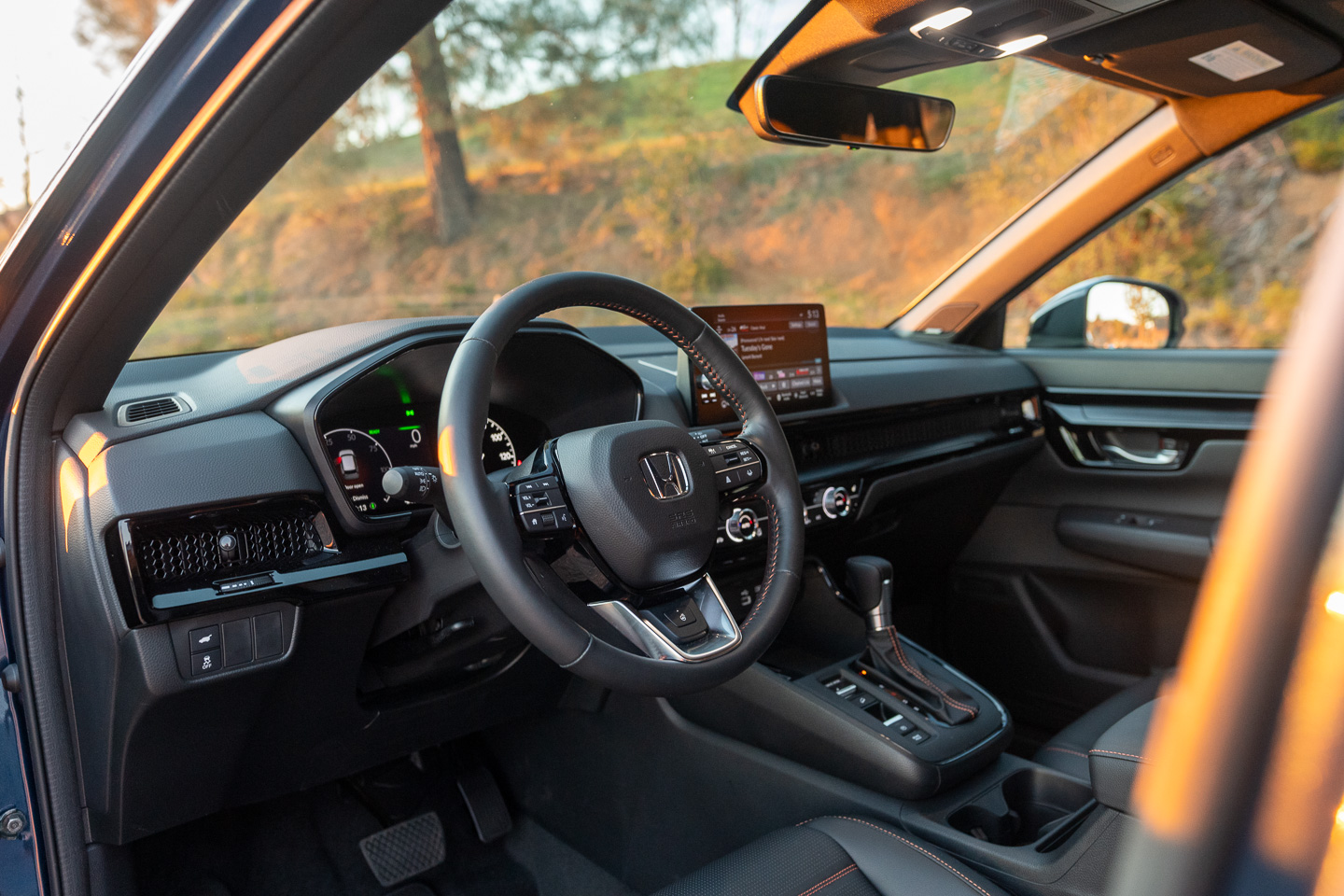The new CR-V is here to capture the mainstream buyer. Will it capture you?
What is it? Ubiquity by ubiquity, that’s the general and safe strategy for successful, modern crossovers and compact SUVs. Too much creativity can be a penalty, and competition is too ruthless to willfully give up a free kick to a talented right foot, or left for that matter; I accept left and right foots all equally. What if, though, the way of standing out today was by not standing out?
After years of popularizing overstyling from brands like Toyota and Hyundai (and even Honda are guilty of this trend) that feature incongruously sharp and pointy elements (pleasing to the general public out of excitement), this new crossover from the Japanese giant is a welcome example of a return to understated design; Their new Accord and Civic also succeed in this regard. By having a reserved and well-statured CR-V, it now stands out on its own via these utilitarian good intentions. Can it earn the right to outsell the Toyota RAV4?
Highs: The redesigned 2023 Honda CR-V Hybrid has seen deep swathes of changes that you both can and cannot see. This Sport Touring currently represents the most expensive CR-V one can buy, with a 204 horsepower hybrid powertrain and AWD. At a sticker price a few dollars under 40 large, $39,845, there’s no doubting the value on offer here for their top-shelf edition; If you want to go the other end of the spectrum, a base model will set you back under $30,000.
Attractive price can really rein in buyers, and Honda has got that down, with many comparable RAV Hybrid XSE and Limited models retailing for $43know. Granted, there are some extra options to choose and have on a RAV4, but having your range-topper come in under 40 is job well done by Honda.
Honda’s application of a hybrid engine continues to impress, with the 204 horsepower punching above its weight in response and real-world performance thanks to a chunky 247 foot-pounds of torque that arrives seamlessly. 0-60 MPH takes eight seconds, hardly worth bragging about, but there’s a certain refinement to the operation, letting go of the gruff and rough nature of past four-cylinders that like doing a constant (and accurate) impression of a trash compactor.
Don’t get me wrong, this is still a four cylinder and has the usual buzzes and coarse noises, but it’s among the best of the breed, especially when it comes to smooth throttle transitions, such as when coasting down to a walk and then reapplying the throttle.
Honda has a won a fan in me with their new interior design direction, choosing a spartan, industrial take in its proceedings, akin to those cool loft style apartments in magazines. I quite like this style, but others may not and that’s all quite understandable. Materials are consistently decent in the cabin, lacking any real luxury items, but instilling a robust and sturdy build that does well to lend an air of quality about itself; While not a fancy interior, it’s still a nice one.
For example, the smooth textures and flush rotating bits on the turn signal stalk signify some considerate thought. Where other vehicles might have multiple ideas and aesthetics competing against one another, the consistency, if a little uninspired, is at least worth bragging over. Space is plentiful throughout the car, but the cargo hold could use an increase in volume for more usability. I do like the comfortable seats and steering wheel, as well as the long air vent strip that runs the course of the dash, showing some confident continuity. It’s also roomy in both rows of seats for passengers, both human and canine.
Lows: I would have hoped for improved mileage from the CR-V, and something more competitive with its RAV4 Hybrid contemporary that dominates the segment, but in a week of meandering driving, I was only able to achieve 29.5 MPG, or about 4 MPG worse than the last RAV4 hybrid I tested and the same as a past CR-V Hybrid. Even on flat freeway driving, mileage stays at a steady 28-30. I noticed that at constant speed, the powertrain switches between running on just the battery, and then having the combustion engine ignite to recharge it. The problem is that when the combustion engine is running, the instant mileage computer gauge is pegged back to about 20 MPG, and runs at a fixed RPM like a generator. I feel like it would behave better if both ran together all the time, but it’s a weird combination of combustion-led-charging, EV, and then combustion-recharging, making for a complicated process that most others won’t even notice. In the end, the efficiency trails the perennial RAV4 Hybrid. Even the last Tucson Hybrid I tested a couple years ago was able to muster 32 MPG.
Another drawback is a center display screen that appears too small relative to the large, vacant dash. Yes, it’s easy to use, but I’m not sure why this doesn’t have the large display that the new Accord inherited, looking for more current and eye-catching to buyers and passengers. In addition, the interior is basically the same quality as a Civic Touring and HR-V Touring, both significantly cheaper models that are both billed by society as ‘entry-level’ compacts. The design and materials used are more or less identical, and you would just hope that this pricier CR-V would have a step up somewhere with some added leather or something. The counterpoint to that is the fact that the aforementioned Hondas do punch above their weight when it comes to their cabins against contemporary Toyotas when compared directly at the same price point (only the expensive Limited-badged Toyotas show some cabin class, of which you’ll pay a premium over a Honda). Another item to note is the lack of a panoramic sunroof/moonroof option, instead only having the puny little standard opening that can’t be upgraded.
Another noteworthy concern was a disconnect in the steering at slow speeds. I don’t mind slow steering – I welcome it in fact for highway munchers – yet the CR-V has a dead spot that results in what can be perceived as a delay when at a moderate 30-40 MPH pace. Things improve at higher speed, but I just found it disappointing from a brand that normally, along with Mazda, builds the driver’s cars of the commuter. I also noticed this characteristic in the Civic Type R in its standard steering mode at slowish speeds as well. The balance and handling of the CR-V impresses on the whole, and works well even as you up the pace (where a RAV4 suffers), but the steering left something to be desired during mundane driving.
Two steps forward, half a step back
Honda’s new CR-V improves upon the prior generation in most every conceivable way. Problem is, I think it should have been a larger step forward. The design language inside and out is great, and quality is evidently there, but the mileage isn’t any better, and with how significant this model is in their lineup – hint, it’s their best-seller – I think more could have been done. However, what can be deserving of high-fives round the Honda boardroom is the fact their top-tier CR-V Hybrid comes in at just under $40,000; A RAV4 Limited, both the standard and Hybrid, can set you back an additional $3,000 to $5,000 depending on options. And it’s for that reason alone why I think this new CR-V Hybrid is a complete winner.
Four less MPG than a RAV4 Hybrid is not an insignificant amount, but who cares when you’re saving this much over a comparable model. Even a Toyota Venza, which I prefer to the RAV4 Hybrid, will set you back further into the red; Honda has a triumph here based on what they are able to deliver at the price point. Concessions were made, but the tradeoffs make sense for a car that represents a complete package for the average consumer and at a price that makes sense.
2023 Honda CR-V Hybrid AWD Sport Touring
Price as-tested: $39,845
Pros: Stylish exterior; Great price; Spacious
Cons: Fuel mileage trails RAV4 Hybrid; Odd steering; Interior could be better
For more automotive content, visitwww.TheRoadBeat.com.
Photos by Mitchell Weitzman, The Road Beat
